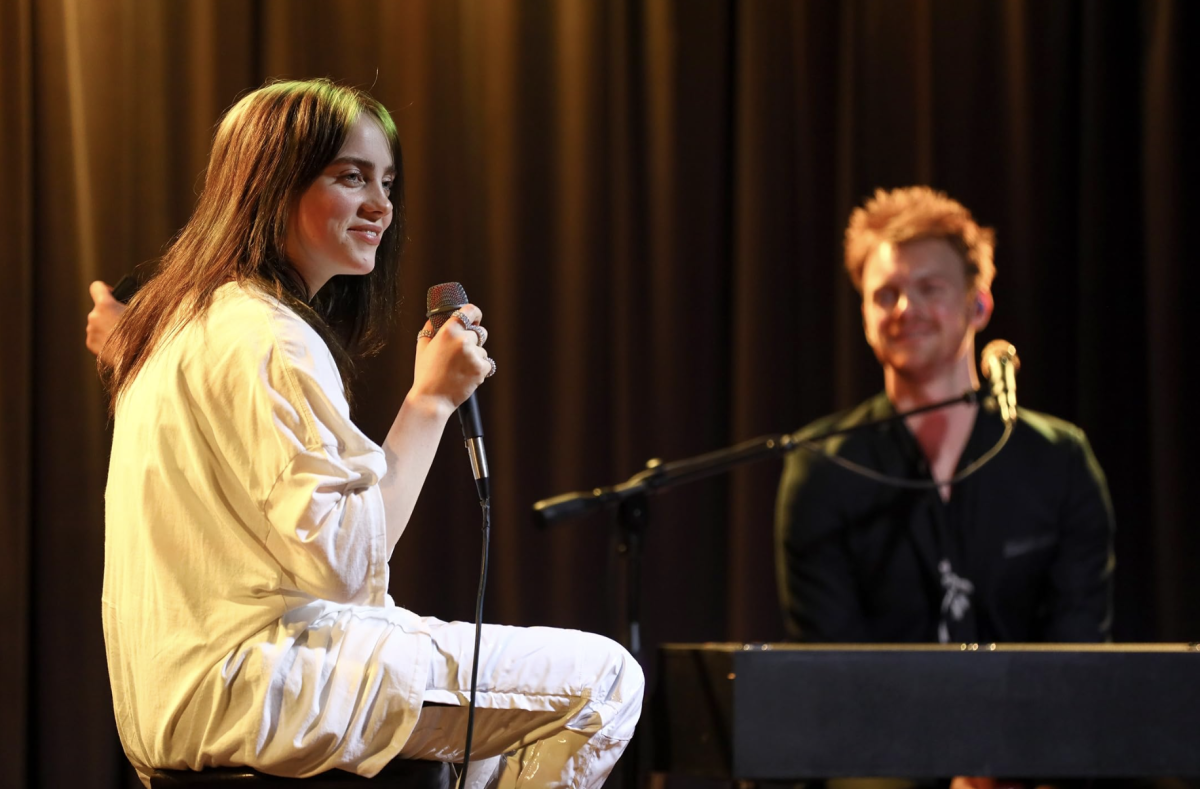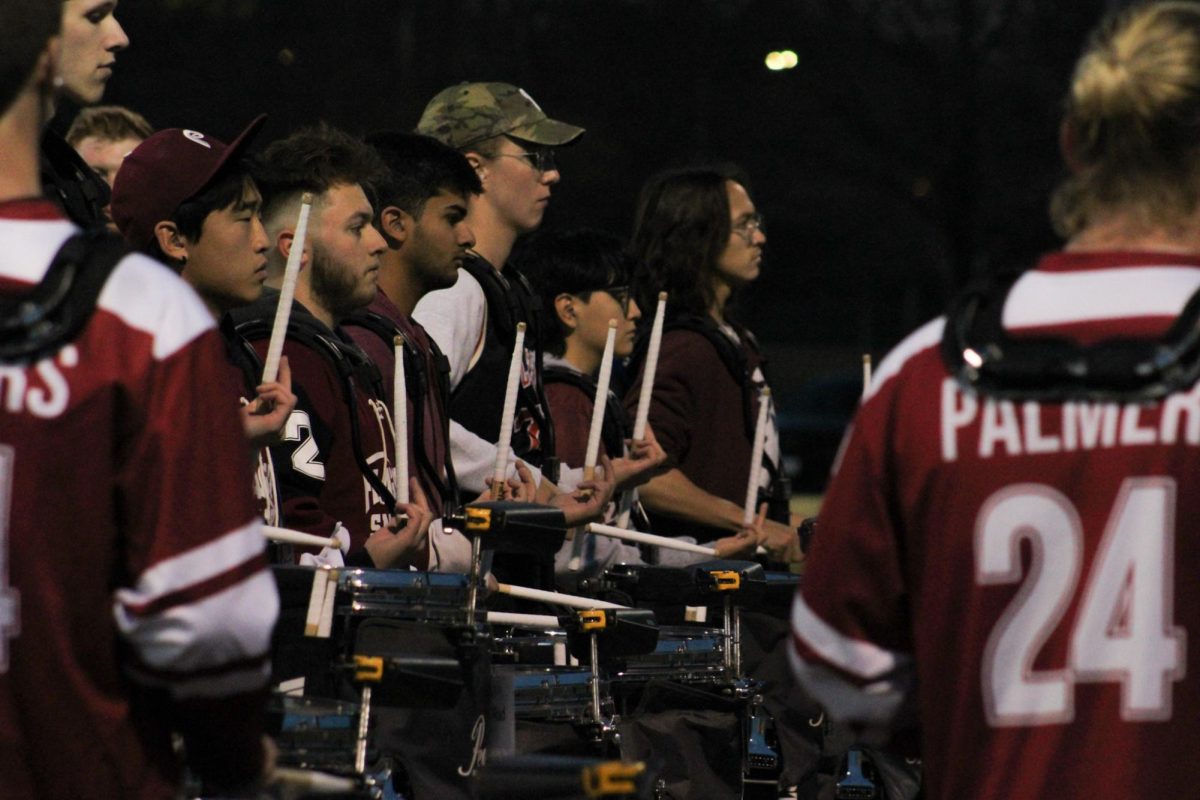
Last Friday night, the Calvin Theater in Northampton was visited by the original lineup of Bela Fleck and the Flecktones, an event which the fair city hasn’t experienced since the last time they toured with founding member Howard Levy in 1992.
Bandleader Bela Fleck’s enthusiastic proclamation early in the performance that the Nashville quartet, “always love to visit Northampton” was verified by an impressive three-hour long set.
With no opening act, the Flecktones took the stage promptly at 8 p.m. with no introduction and immediately began jamming away. While the ’Tones have left a rich and prolific discography in the trail of their two-decade-plus career, they are undoubtedly a primarily live band by nature. Their roots in the diverse and lively arts of jazz, bluegrass and funk music allow the foursome to put on a show that effortlessly marries incredibly disciplined musical technique with a more than rousing stage presence.
As per usual, the performance mirrored that of an avant-jazz quartet with eclectic instrumentation. The reason the Flecktones are so captivating live is that they don’t play songs as much as they craft sonic voyages. The band comes in together at the beginning of each number with their seasoned brand of progressive bluegrass-meets-jazz-funkjamming. In time, each of the four members takes off on their own solo sections, adding shades of everything from pop and classical to folk and rock to the twisting musical journey.
A great deal of the night’s setlist consisted of songs from the group’s most recent album “Rocket Science,” which is the first album since 1992 to feature the reunited Flecktones lineup of Levy (harmonica, piano), Bela Fleck (banjo), Victor Wooten (bass) and Roy “Futureman” Wooten (drums and percussion). Songs such as “Like Water” – a joint composition between Fleck and the former Wooten – show that the reunited lineup still has the juice from their early days of glory.
As a tribute to Levy’s return to the band as a full-time member, the rest of the setlist was solely derived of songs from the Flecktones’ first three albums before Levy’s initial departure. They pulled out a few classic fan favorites, such as “Sex in a Pan” from 1992’s “UFO Tofu” and “Blu-bop” from their seminal 1991 album “Flight of the Cosmic Hippo.” The group injected the old hits with rejuvenated vigor, displaying that the old lineup is still growing together even after so many years apart.
While many completely instrumental four piece acts would fall on their faces attempting to hold a packed theater’s attention for three hours through winding multidimensional jam sessions, Bela Fleck and Flecktones’ pull it off with class, due in no small part to the individual members’ extremely virtuosic musical ability on their respective instruments.
Levy is almost certainly the most talented person on Earth who can play piano and harmonica, even playing both simultaneously at some points in the show. While his intense mouth harp skills floated a unique timbre over many songs, his abilities at the piano were truly amazing – between cascading arpeggios and quicksilver trills, he evoked a musical character halfway between Jerry Lee Lewis and Franz Liszt.
The brothers Wooten made up a rhythm section like no other. Roy Wooten, a.k.a. Futureman, plays percussion via his “drumitar,” a unique key-tar like contraption of his own invention that plays various drum and percussion sounds via button pressing. He also plays some more standard acoustic percussion instruments at some points, and even plays both live drums and the drumitar at the same time in certain songs, making for an impressive performance. He is by far the most subtle member of the group musically speaking, usually laying back in the pocket and laying down a jazzy groove for the rest of the ’Tones to extrapolate over.
Victor Wooten, while perhaps sporting the most normative musical instrument out of all his bandmates, is head and shoulders above nearly any bass guitarist in a live setting. Wooten took more than a few solos, and never failed to leave every jaw on the floor each time. Between his undeniably funky musical instincts and his supersonic pop-slap technique, when Wooten really let it fly, it left the entire crowd in awe.
Fleck continues to earn the reputation as one of the best banjo players of all time. Switching between acoustic and electric banjos – including a neat looking purple Gibson SG shaped banjo – Fleck frequently used guitar effects pedals in order to give his twangy, melodic lines several flavor variations, including a searing electric blues feel and an eerie psychedelic echo. Before the night was over, the other Flecktones announced that they would give the audience a “special treat,” and left the stage while Fleck performed an unaccompanied acoustic banjo piece of his own composition.
After this intimate change-up, the rest of the group returned, and the show was closed with a bombastically extended version of their Grammy award-winning tune “The Sinister Minister” from their self-titled 1989 debut. After going back and forth through several solo sections, Victor Wooten took one last bass solo that was lengthy enough to allow the other members to exit the stage for a few moments. As Wooten brought the crowd to their feet at the end of his solo, the band returned and played through the song’s main theme together one last time before bowing out a roaring standing ovation.
Dave Coffey can be reached at [email protected].












